Bit of Bird Chatter NYT: What It Means and Why It’s Special
Table of Contents
Introduction:
A bit of bird chatter NYT may seem like just background noise, but it’s so much more than that. Birds use their voices to communicate important messages to each other. Whether it’s a soft chirp, a loud call, or a sharp whistle, every sound has meaning. Through their chatter, birds talk about food, safety, and even changes in the weather. It’s amazing how much you can learn by listening to these small creatures.
In the mornings, we often hear a bit of bird chatter NYT as the birds wake up and start their day. This early morning chatter can be one of the first sounds we hear, and it helps set the mood for the day ahead. The birds are awake, and their chatter fills the air with life. If you pay attention, you might notice that the birds have different sounds depending on what’s going on around them.
Bird chatter isn’t just about noise—it’s part of the rhythm of nature. Birds use these sounds to connect with their surroundings, warn each other of dangers, and even celebrate the start of a new day. So, next time you hear a bit of bird chatter, take a moment to stop and listen. You might just discover something new about the world around you.
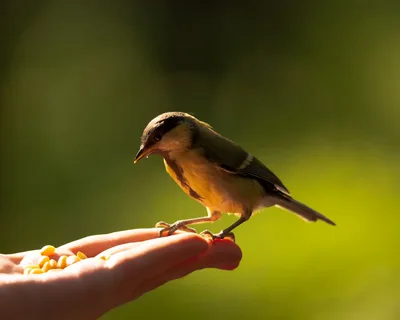
What is a Bit of Bird Chatter NYT? Understanding the Sounds
A bit of bird chatter NYT refers to the various sounds birds make to communicate with each other. These sounds can range from soft chirps to loud calls, and each type of sound serves a different purpose. Birds might use these sounds to signal danger, attract a mate, or mark their territory. Each bird species has its own unique way of chatting, which can make birdwatching even more exciting. For example, the bright chirps of a sparrow might mean something different than the deep hoots of an owl.
The sounds of bird chatter can vary depending on the time of day, the season, or even the bird’s mood. In the early morning, many birds sing and chat to greet the new day. Their calls can be heard in forests, backyards, and parks, creating a peaceful soundscape. In contrast, during the evening, some birds might use different calls to signal it’s time to rest. This change in chatter shows how birds are in tune with the world around them and how they adapt their sounds to fit different situations.
Understanding a bit of bird chatter NYT is also about paying attention to the context in which the birds are calling. For instance, a sharp, loud call may warn other birds about a predator nearby, while softer sounds could signal contentment or the discovery of food. The way birds use these sounds to communicate with each other helps them survive and thrive in their environments. If you listen carefully, you might even start to notice patterns and begin to recognize what different sounds mean.
Birdwatchers and nature lovers have long been fascinated by bird chatter. It’s a way of connecting with nature and understanding how birds interact with their surroundings. By studying bird sounds, scientists can learn a lot about bird behavior and the health of different ecosystems. The more we listen to these sounds, the more we learn about how birds live and communicate. So next time you hear a bit of bird chatter NYT, try to pay attention to the details—it might just tell you something important.
By understanding the different types of bird chatter, we can also appreciate the rich variety of sounds birds bring to our environment. Whether it’s the cheerful trill of a robin or the complex calls of a crow, each sound adds to the beautiful symphony of nature. Next time you hear a bit of bird chatter, take a moment to listen closely—you might find yourself getting lost in the world of bird communication.
The Hidden Messages in a Bit of Bird Chatter NYT
A bit of bird chatter NYT often carries hidden messages that only other birds can understand. These messages are crucial for communication and survival. For instance, when a bird hears a sharp, warning call, it knows to be alert and watch out for danger. This type of chatter is important for protecting themselves and their families from predators like hawks or cats. In a way, bird chatter acts like a warning system that keeps birds safe in the wild.
Not all bird chatter is about danger, though. Birds also use their voices to mark their territory. When a male bird sings loudly and proudly, he’s letting other males know that this area is his. This type of chatter can prevent fights by showing other birds that the area is already claimed. It’s a way for birds to establish boundaries without having to physically fight for space, saving their energy for more important tasks like finding food or attracting mates.
Birds also use their chatter to communicate with each other in a more social way. For example, a group of birds might make soft, gentle sounds to stay connected while foraging for food. These sounds help them keep track of one another in the group. The chatter might also indicate that food has been found. It’s like a secret signal that tells other birds, “Come here! There’s something good to eat!” In this way, bird chatter helps strengthen their social bonds and makes their lives easier.
Another hidden message in bird chatter can be related to mating. During the breeding season, male birds often sing or chirp to attract females. The quality and frequency of their calls can indicate how strong and healthy they are. A bird that sings loudly and consistently might be seen as a good mate, while a quieter or weaker bird might not catch the attention of a potential partner. So, a bit of bird chatter NYT can also be a way to find love and ensure the survival of the species.
Bird chatter is not just random noise—it’s a powerful way for birds to send and receive important information. By understanding these hidden messages, we can get a glimpse into the world of birds and how they navigate the challenges of life. Whether it’s a warning call, a mating song, or a social signal, each sound has meaning that is essential for the bird’s survival and well-being.
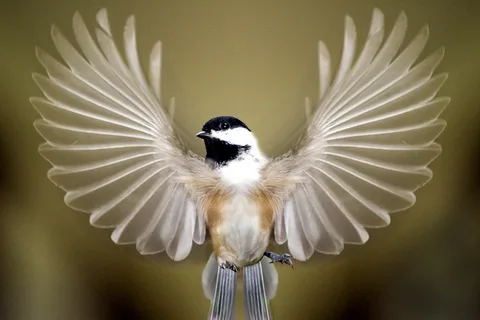
Why Birds Love to Chat: A Look at Bird Communication
Birds love to chat because it’s their way of connecting with each other and their environment. Communication is essential for their survival, and bird chatter helps them share important information. For example, when a bird sings a beautiful melody, it’s not just for enjoyment—it’s also a way to communicate with others in the area. Birds use their calls and songs to send messages about territory, food, and even their feelings. Each bird species has its own unique style of communication, but the main goal is the same: to stay connected with others and stay safe.
One of the main reasons birds chatter is to protect themselves. Birds have a variety of warning calls that help alert the group to the presence of predators. A sudden, sharp call can tell nearby birds to fly away or hide. These warnings are especially important in areas where predators like hawks or snakes are common. By chatting, birds can warn each other without having to face danger directly. This is one of the most important ways communication helps birds survive in the wild.
Birds also love to chat because it helps them build strong social bonds. In flocks, birds often use their chatter to keep track of each other, especially when they are flying in large groups. These calls can help them stay close together, whether they’re migrating or looking for food. By chattering, birds maintain their social ties, making it easier to work together. In some species, like parrots, communication is key to maintaining family groups and ensuring everyone is safe.
Another reason why birds chat is to find mates. During mating season, male birds sing or call to attract females. The louder and more impressive the call, the more likely they are to get noticed. Female birds often choose mates based on the strength of their calls, as it signals health and vitality. For birds, a bit of bird chatter NYT can be the difference between finding a mate and going unnoticed. So, bird communication plays a big role in ensuring that birds can continue to reproduce and grow their populations.
Bird communication is also important when it comes to finding food. Birds have calls that signal to others when they have found something to eat. For example, when a bird spots a tasty insect or a patch of berries, it may call out to its friends. This “food call” helps the group gather around the food source, making it easier for everyone to share. In this way, bird chatter isn’t just about survival—it’s also about sharing resources and making life easier for the whole group.
A Bit of Bird Chatter NYT: How it Relates to Nature’s Rhythm
A bit of bird chatter NYT is closely tied to nature’s rhythm, playing a key role in the way birds interact with the world around them. Birds are deeply in tune with the changes in their environment, and their chatter reflects the natural cycles of life. For example, as seasons change, so does the type of bird chatter you hear. In the spring and summer, birds are often more vocal, using their songs to attract mates and claim territory. In the fall and winter, their chatter might become quieter as they focus more on finding food and surviving the cold.
Birds’ calls are also synchronized with the time of day. Early in the morning, before the sun rises, the first signs of bird chatter can be heard. This is known as the “dawn chorus,” where many species sing together to greet the new day. It’s a natural rhythm that signals the start of another day in the bird’s world. These early morning sounds can vary depending on the species, but they all serve the same purpose: to announce their presence and begin their day. As the day progresses, bird chatter may change, becoming softer or more sporadic as the birds go about their tasks.
The rhythm of bird chatter also aligns with their need to communicate with each other throughout the day. Whether it’s warning others about a predator or sharing news of a food source, birds rely on their calls to keep the flow of daily life moving smoothly. A quick chirp can alert a group of birds to danger, while a longer song can tell others that the bird is ready to mate. This constant cycle of communication helps maintain the balance of nature, where every bird has a role to play, and the rhythm of their chatter is essential to their survival.
Throughout the year, bird chatter helps to mark changes in nature’s rhythm. During the breeding season, for example, the frequency of bird songs increases as birds try to attract mates and establish their territories. As the weather cools and winter approaches, some birds migrate, and their chatter changes to reflect this important shift. For birds that remain in one place, their chatter becomes more focused on survival, such as searching for food or finding shelter. In this way, a bit of bird chatter NYT is a clear signal that nature is constantly changing, and birds are responding to those changes.
Bird chatter doesn’t just happen randomly—it is part of the greater natural rhythm that governs life on Earth. The songs and calls of birds are synchronized with the cycles of the seasons, the time of day, and the needs of the birds themselves. Whether it’s marking the beginning of a new day or warning others of danger, bird chatter is an essential part of how birds connect with their environment and adapt to the world around them.
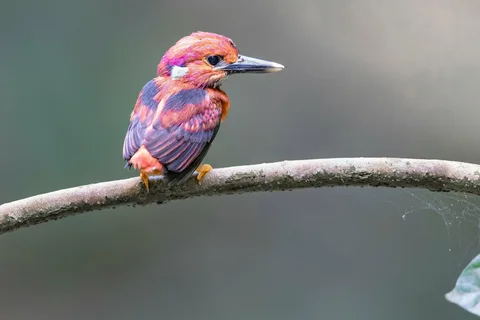
How a Bit of Bird Chatter NYT Can Change Your Day
A bit of bird chatter NYT can have a surprising effect on your day, bringing a sense of calm and connection to nature. Just listening to the sweet sounds of birds chirping in the morning can help set a positive tone for the rest of your day. These early morning songs create a peaceful atmosphere, allowing you to start your day feeling refreshed and in tune with the natural world around you. The cheerful chatter of birds can also help reduce stress and make you feel more relaxed, especially if you’re feeling overwhelmed or anxious.
Bird chatter also encourages mindfulness, helping you to focus on the present moment. When you hear a bird calling or singing, it draws your attention away from your busy thoughts and brings you into the here and now. This moment of connection with nature can ground you, making you more aware of the beauty and calm that exists outside your usual routine. Whether you’re taking a walk in the park or just listening through your window, a bit of bird chatter can remind you to slow down and enjoy the simple things in life.
For many, hearing bird chatter can spark feelings of happiness and joy. The sounds of birds in the morning can trigger positive memories or thoughts about nature, making you feel uplifted. This is especially true when you hear birds singing or chattering with excitement during spring or summer. These little bursts of sound can brighten your mood and give you a sense of hope and renewal, as they symbolize the arrival of a new day and a fresh start. In this way, bird chatter can serve as a natural mood booster.
In addition, listening to a bit of bird chatter NYT can inspire creativity. If you are someone who enjoys writing, drawing, or any other form of creative expression, the sounds of birds can be the perfect background music. Their varied calls and songs can spark new ideas and help you think more freely. Just as birds use their chatter to express themselves, you may find that the sounds around you help you express your own thoughts and feelings in unique ways.
Lastly, a bit of bird chatter can create a sense of connection to the environment and the world beyond your own immediate concerns. When you hear birds communicating with each other, you might feel more connected to the larger rhythm of life. This connection to nature can help you feel more grounded and aware of the world around you. It’s a gentle reminder that no matter what is happening in your life, the world continues to move forward, with nature’s own rhythm guiding the way.
Exploring the Significance of a Bit of Bird Chatter NYT in Early Mornings
A bit of bird chatter NYT in the early mornings carries a special significance that many people may not fully realize. As the sun begins to rise, birds are often the first creatures to greet the new day with their songs and calls. This early morning chatter, known as the “dawn chorus,” is not just a random noise; it plays a vital role in the lives of birds. For many species, the first light of day is when they are most active, marking the beginning of their daily routines. Hearing bird chatter at this time reminds us of the peacefulness and order of nature.
The morning bird chatter is often louder and more vibrant than at other times of the day. This is because birds use their calls to establish territory and attract mates, especially during the breeding season. Male birds sing early in the morning to showcase their strength and health, signaling to other males that their territory is already claimed. At the same time, these songs serve as a message to females, inviting them to take notice. The sounds of these early morning calls create a sense of renewal and hope, as birds prepare to take on the challenges of the day ahead.
For humans, listening to the early morning bird chatter can have a calming effect. Many people find that hearing birds sing or chirp first thing in the morning can help them start the day on a positive note. The gentle sounds can ease feelings of anxiety or stress, creating a peaceful atmosphere that encourages mindfulness. Instead of rushing into the day, the bird chatter provides a moment of pause, reminding us to breathe and enjoy the simple beauty of nature. It’s a natural form of relaxation that has been shown to improve mental well-being.
Bird chatter in the early morning also connects us to the natural rhythms of life. As we listen to the calls of birds, we are reminded that life continues on, whether we are ready for the day or not. The sounds of birds in the early morning are in sync with the rise of the sun, the changing seasons, and the cycles of nature. These familiar sounds ground us and provide a sense of continuity, helping us feel more connected to the world around us. It’s a gentle reminder that we are part of something larger, a world that operates according to its own natural flow.
Ultimately, a bit of bird chatter NYT in the early mornings is a celebration of life and nature. Whether it’s a song that fills the air or a simple chirp, these early morning sounds are a testament to the beauty and resilience of the natural world. For those who take a moment to listen, bird chatter offers a chance to reflect, recharge, and reconnect with the world outside. It’s an experience that helps set the tone for a positive, balanced day ahead.

What a Bit of Bird Chatter NYT Can Teach Us About the Environment
A bit of bird chatter NYT can teach us a lot about the environment, offering clues about the health and balance of the ecosystem. Birds are highly sensitive to their surroundings, and their calls reflect changes in their habitat. For instance, if you hear a bird’s song that is unusually quiet or absent during certain times of the year, it may indicate that something is affecting the local environment. Birds are one of the first species to react to changes like pollution, habitat destruction, or climate shifts. By paying attention to their chatter, we can better understand the state of the environment and what needs attention.
The frequency and type of bird chatter can also signal the quality of the habitat. In healthy environments, birds are more likely to be active and vocal, particularly during the breeding season. When a habitat is disturbed—whether due to deforestation, urbanization, or climate change—bird chatter often diminishes. In some cases, birds may stop singing altogether or migrate elsewhere in search of better conditions. These changes in their vocal behavior are an early warning sign that the environment may be in trouble, making bird chatter an important indicator of ecological health.
Bird chatter also provides insights into the biodiversity of an area. The variety of bird songs and calls in a particular location often reflects the diversity of species present. Areas with a rich variety of birds tend to have more complex ecosystems, where plants, insects, and other wildlife thrive. On the other hand, areas with fewer bird species or less frequent bird chatter may indicate a loss of biodiversity. By listening closely to the different types of bird chatter, we can learn more about the wildlife that calls a particular area home and how changes in the environment might be affecting them.
Furthermore, birds play an essential role in maintaining the environment, and their chatter serves as a reminder of their contributions. Many birds help control insect populations, pollinate plants, and disperse seeds. By understanding how birds communicate with each other through their songs and calls, we can gain a deeper appreciation for the ways in which they help shape and protect ecosystems. In this way, bird chatter not only teaches us about the health of the environment but also about the important role birds play in preserving it.
Listening to a bit of bird chatter NYT can inspire us to take better care of our environment. It reminds us that every change in nature, no matter how small, affects the balance of life around us. As we hear birds calling out to one another, it becomes clear how interconnected the world is. These simple sounds carry powerful messages, urging us to protect and nurture the ecosystems that sustain us and the birds that share our world.
The Different Types of Bird Chatter: Understanding Each Sound
Birds use a variety of sounds to communicate with each other, and each type of bird chatter serves a different purpose. These sounds can vary widely depending on the species, the situation, and the time of day. One common type of bird chatter is the song. Typically, male birds sing to attract mates and establish territory. Their songs are often melodic and loud, and they help to warn other males to stay away from their claimed areas. These songs are most prominent during the breeding season, but birds may also sing to communicate with their flock and to express their presence in the environment.
Another common type of bird chatter is the call, which is often shorter and more abrupt than a song. Calls can serve a variety of purposes, such as alerting other birds to danger or signaling the presence of food. For example, crows and sparrows often make a sharp call when they spot a predator, warning the rest of the group to stay alert. Calls can also help birds coordinate during migration or while foraging in groups, as they communicate the location of resources or potential threats. These calls are typically more functional and less melodious than songs.
Birds also use chirps, which are short, repetitive sounds, often heard in the early morning or late afternoon. Chirping is common among small birds like sparrows and finches, and it usually indicates a state of alertness or excitement. Chirps can serve as a form of communication between birds in a flock, helping them stay in touch and maintain coordination. These little bursts of sound can also signal contentment, as birds chirp when they are comfortable in their environment, whether they are resting or feeding.
A more subtle form of bird chatter is the whistle, which is often high-pitched and melodic. Whistles are common among species like woodpeckers and warblers. These sounds can be used to communicate between birds, often as a greeting or to maintain contact within a group. Whistling can also be used to attract mates or alert others to the presence of food or danger. The tone of a bird’s whistle can vary depending on its mood, the urgency of the message, or the species involved, creating a wide range of sounds within a single type of communication.
Finally, trills are rapid, vibrating sounds that birds often use to communicate aggression or dominance, especially during mating season. Trills can be heard in the songs of birds like the American robin or the Northern mockingbird, signaling strength and readiness to defend a territory. Trilling sounds are also used in social interactions, where a bird may trill to establish rank within a group. These sounds are more complex and often reflect the bird’s emotional state, ranging from defensive to excited.
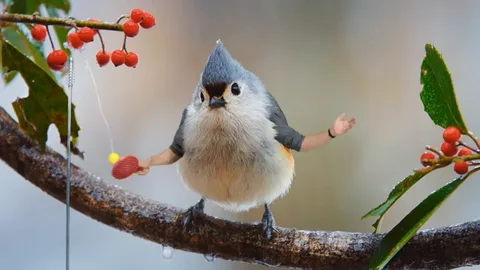
How to Listen to a Bit of Bird Chatter NYT and Spot the Messages
Listening to a bit of bird chatter NYT is an enjoyable experience, but it’s also a great way to tune into the subtle messages birds are sending out. The first step in truly understanding bird chatter is to spend time outdoors, preferably in a quiet, natural setting where bird sounds are more prominent. Early mornings or late afternoons are often the best times to hear a variety of bird calls and songs. These moments provide the peace and clarity needed to focus on the sounds around you. By being patient and quiet, you can start to pick up the different types of chatter and learn what they mean.
Once you’re in the right environment, the next step is to differentiate between the types of sounds birds make. Start by listening for songs, which tend to be longer, more melodic, and often repeated. These are usually territorial calls from male birds hoping to attract mates or mark their territory. As you listen, pay attention to the pitch and rhythm of the songs. For instance, a bird that repeats the same song over and over may be trying to establish dominance or signal its presence to other birds. On the other hand, shorter calls or chirps often signal alarm or communication within a flock. By learning to identify these patterns, you can begin to understand what the birds are trying to communicate.
Another way to spot messages in bird chatter is by observing the context of the sounds. If you hear a bird’s song while it is perched in a tree, it could be sending a message to warn off other males or attract a mate. However, if the same bird suddenly starts making sharp calls or alarm sounds, something may have startled it. Often, these calls are warnings about predators or other dangers in the area. By observing the bird’s body language and surroundings, you can gain a better understanding of what’s happening and what message the bird is sending.
Listening for patterns is another important skill when trying to spot the messages in bird chatter. Many birds will repeat their calls in specific patterns that convey different meanings. For example, some birds may trill or chirp in a rhythmic sequence to signal that they’ve found food, while others might make a series of calls to direct their flock toward safety. Recognizing these patterns can help you understand how birds communicate with each other. The more you listen and observe, the better you’ll get at spotting these patterns and connecting them to specific messages, like warnings, excitement, or signals of friendship.
Finally, understanding bird chatter often involves learning about the birds themselves. Each species has its own unique set of calls, songs, and behaviors. By researching the birds in your area, you can start to recognize which birds are making the sounds you hear and what those sounds typically mean. This knowledge can deepen your appreciation for the natural world and give you a greater insight into the messages behind the chatter. As you listen to bird sounds over time, you’ll begin to decode their language and gain a deeper connection to the environment.
Birdwatching: What Does a Bit of Bird Chatter NYT Really Mean?
Birdwatching is more than just observing birds; it’s about connecting with nature and understanding the language of the birds through their chatter. When you hear a bit of bird chatter NYT, it’s often tempting to simply enjoy the sounds, but there’s so much more to these noises than meets the ear. Each call, song, or chirp that a bird makes has a purpose, whether it’s to warn others of danger, claim territory, or even express excitement. By paying close attention to these sounds, birdwatchers can gain insights into a bird’s behavior, its emotional state, and its interaction with the environment.
One of the first things to know about bird chatter is that it can signal a wide range of messages. A bird’s song, often heard during the breeding season, can mean it’s marking its territory or calling for a mate. These songs are typically loud and repetitive, letting other birds know that this area is already taken. On the other hand, a bird’s calls, which are shorter and sharper, may be used to alert others of a threat or to warn of an approaching predator. If you hear rapid, high-pitched calls, it’s likely that the bird is reacting to a stressful situation, signaling danger to its flock. Understanding these subtle differences can make birdwatching more engaging, as you’ll begin to connect sounds with specific behaviors.
Another key aspect of bird chatter is the context in which the sounds are made. If you hear a bird calling while flying or interacting with a group, it could be coordinating with others for feeding or migration. Birds that live in groups, like sparrows or crows, often use chatter to stay in contact and help with foraging. A lone bird that suddenly bursts into song may be signaling its territory or trying to attract attention. Watching the bird’s movements and observing its surroundings can provide helpful clues to interpret what the chatter means. Birdwatchers who focus not only on the sound but also on the bird’s actions can better understand what is happening in the bird’s world.
Birdwatching also reveals how different species use chatter in their own unique ways. For example, some birds, like the nightingale, have complex songs that are used to attract mates. Others, like woodpeckers, communicate through drumming and tapping. While some birds may rely more on visual signals or body language, others use their vocalizations as the primary method of communication. This diversity in how birds communicate adds an extra layer of fascination for birdwatchers, as understanding these behaviors can give you a deeper understanding of their social structures and ways of life. Each species has developed its own unique way of chatting with the world.
Finally, birdwatching and listening to a bit of bird chatter NYT offers us a chance to connect more deeply with nature. Birds have adapted to their environment in remarkable ways, and their chatter reflects their need to survive, communicate, and thrive. As we tune in to the sounds of birds, we start to see the bigger picture—the importance of protecting these creatures and their habitats. Birdwatching not only helps us understand what a bird’s chatter means but also reminds us of the delicate balance of nature. The more we learn about birds and their communication, the better equipped we are to appreciate and protect the natural world.
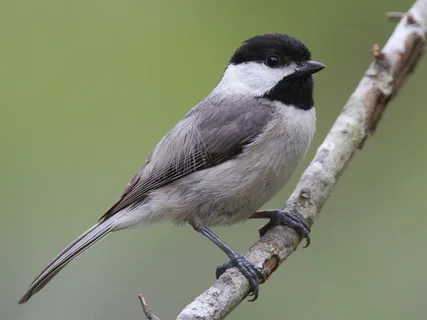
From the Forest to Your Backyard: The Spread of a Bit of Bird Chatter NYT
A bit of bird chatter NYT isn’t confined to the quiet corners of dense forests or remote natural reserves; it has found its way into our backyards, parks, and city spaces. As urbanization spreads, many birds have adapted to living in environments that were once foreign to them. Species that once only thrived in forests have gradually begun to make themselves at home in suburban and urban areas. This spread of bird chatter from the wild into our backyards is an interesting phenomenon, showing how resilient and adaptable birds can be in responding to changes in their habitats. When you hear birds singing or chirping outside your window, you’re listening to a piece of that natural world making its way into the spaces we now call home.
The reasons birds are moving into more urbanized areas are varied. One key factor is the availability of food. Many cities and towns have parks, gardens, and even garbage bins that provide a steady food source for birds. Moreover, some birds, like pigeons and sparrows, thrive in crowded areas because they can find shelter in buildings and trees that are now a part of the urban landscape. As cities grow, so too does the variety of birds that call these areas home. You may hear a bit of bird chatter NYT in the form of chirps and calls that were once associated only with rural life. These sounds now echo in urban spaces as birds adapt and use the built environment to their advantage.
Interestingly, the types of birds that move into urban areas often have different behaviors than those living in forests or rural settings. Birds like crows and magpies are highly social and can be seen in large groups in city spaces, often making louder and more frequent calls. These birds have adapted to city life, using their chatter not just to communicate with each other but also to navigate the bustling urban environment. On the other hand, birds that are more solitary, like owls or woodpeckers, tend to stay in quieter parts of the city or return to rural areas. However, as more people take interest in birdwatching and creating bird-friendly spaces in their gardens, these species are slowly becoming more accustomed to the presence of humans.
As bird chatter spreads into our backyards, it also fosters a deeper connection between people and nature. More and more people are discovering the joy of birdwatching right from their own windows. The presence of bird chatter adds life to a space and reminds us of the beauty and complexity of the natural world. By listening to these sounds, we can begin to identify the species in our surroundings and learn more about their habits. In doing so, we foster a sense of appreciation and responsibility for the creatures that share our environment. A bit of bird chatter NYT, once reserved for distant forests, has now become a part of the daily soundtrack of life, connecting us all to the world of birds.
This spread of bird chatter also highlights the importance of creating spaces where birds can thrive. As cities become more aware of the need for green spaces and urban biodiversity, more parks, birdhouses, and community gardens are being built to attract birds. These spaces not only help birds survive in an increasingly urbanized world, but they also bring people closer to nature. The more bird-friendly environments we create, the more we will hear the cheerful chatter of birds in our neighborhoods. The sound of birds, once so distant, is now closer than ever, reminding us of the vibrant and resilient world of nature.
Finding Peace Through a Bit of Bird Chatter NYT: Why Nature Soothes Us
In today’s fast-paced world, finding moments of peace can be a challenge. However, nature has a special way of calming our minds and bringing us a sense of tranquility, and one of the simplest ways it does this is through bird chatter. A bit of bird chatter NYT, whether it’s the soft chirp of a sparrow or the cheerful song of a robin, has the power to soothe us. When we listen to the sounds of birds, we are reminded of the natural rhythm of life, which can be incredibly grounding. These peaceful moments allow us to step away from the noise of daily life and reconnect with the calming presence of nature.
One reason bird chatter is so soothing is that it is often associated with calm and peaceful environments. Birds tend to sing during the early morning hours, when the world is still quiet, and the air is fresh. These early morning sounds can serve as a gentle wake-up call, helping to set the tone for a peaceful day. Studies have shown that natural sounds like bird chatter can reduce stress and anxiety levels. The soft, repetitive nature of bird songs can have a meditative effect, allowing our minds to slow down and focus on the present moment. Listening to these sounds can help us feel more relaxed and in tune with the world around us.
Bird chatter also serves as a form of positive distraction. In moments of stress or worry, tuning into the sounds of birds can shift our focus away from our concerns. Instead of ruminating on negative thoughts, we can turn our attention to the simple beauty of nature. The soft chirps and songs of birds remind us that life continues to flow, no matter what challenges we face. This reminder can help us feel more at ease and less overwhelmed by the stresses of daily life. It’s as if the birds are telling us to pause, breathe, and appreciate the present.
Another reason bird chatter is so calming is that it helps us feel more connected to the natural world. In urban areas, where the sounds of traffic and crowds dominate, hearing birds in the background can feel like a breath of fresh air. It’s a reminder that nature is all around us, even in the busiest of places. Birds are often the first signs of life we notice when we step outside, and their chatter brings a sense of peace and connection to something larger than ourselves. Whether we hear them in our backyards or on a walk through the park, the presence of birds reminds us of the beauty and simplicity of nature.
Ultimately, finding peace through bird chatter is about allowing ourselves to be present in the moment. The simple act of listening to birds can help us disconnect from the constant rush of modern life and return to a place of inner calm. As we tune into the sounds of nature, we are reminded of the things that truly matter—the beauty of the world, the importance of slowing down, and the peace that can be found in the quiet moments of life. A bit of bird chatter NYT offers us a chance to pause, breathe, and find solace in the natural world, helping us navigate the stresses of life with a little more peace and a little less worry.
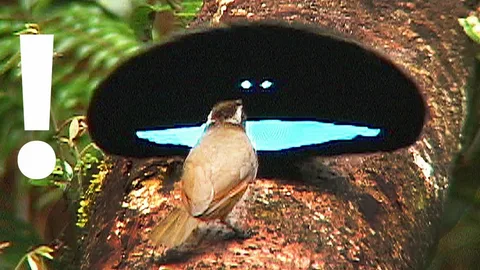
Conclusion:
In conclusion, a bit of bird chatter NYT is more than just a cute sound we hear in nature. It carries important messages between birds, helping them stay safe and connect with each other. Whether it’s a cheerful tweet in the morning or a warning call, every sound tells a story. Next time you hear a bit of bird chatter, try to listen closely, and you might just discover the hidden world of bird communication.
Bird chatter is also a reminder of how connected we are to the natural world. When we stop to listen, we can find peace and calm in the sounds around us. So, take a moment to enjoy the bird chatter in your own backyard or while on a walk. It’s a simple way to feel closer to nature and appreciate the beauty of the world around us.
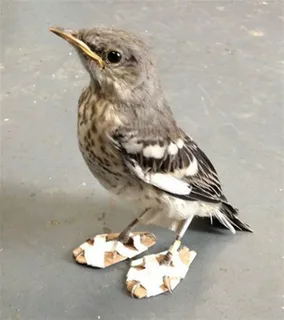













Post Comment